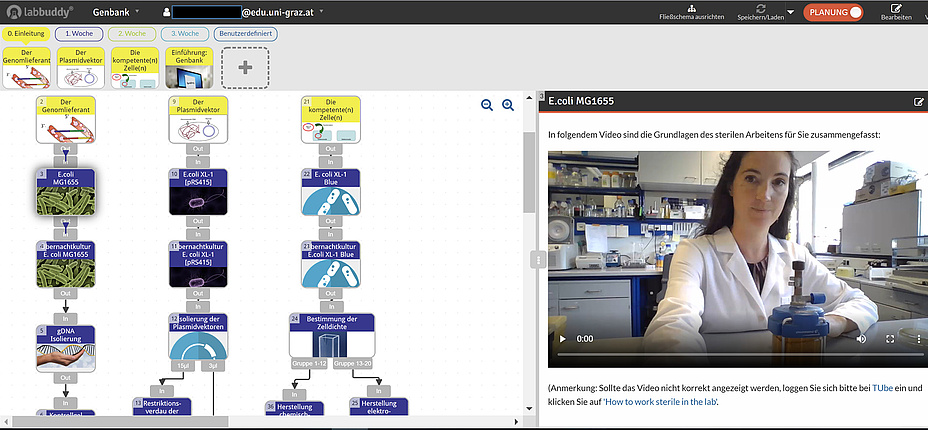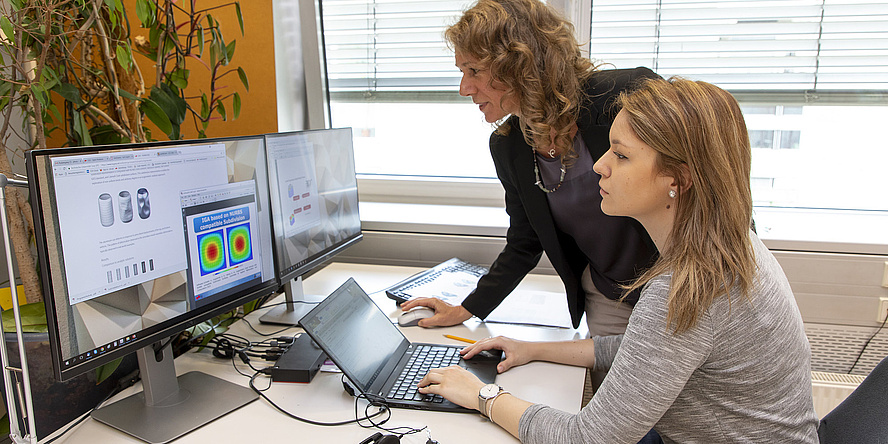"We had set a goal before the pandemic to revamp our molecular biology lab exercise course and support it with digital teaching tools. Now we were faced with the task of holding the course under tightened hygiene measures and corona-related restrictions and supporting the students' learning success in the best way we could," Robert Kourist, head of the Institute of Molecular Biotechnology at Graz University of Technology (TU Graz), explains the initial situation. "Using the ‘LabBuddy’ educational software from a Dutch company, we digitally recreated the process of our lab experiments. In the new laboratory version, students prepare experiments with tasks independently at home. Video instructions, info boxes, and work logs provide necessary background knowledge, and practice questions for self-monitoring are part of the process." Due to corona, the scope of the experiments in the laboratory was somewhat reduced and carried out in shifts. Thanks to LabBuddy and the great commitment of the teaching team, it was nevertheless possible to convey a large part of the teaching content of all experiments to no less than 36 exercise participants.

Teaching staff at TU Graz have digitized laboratory content using the LabBuddy software; this is an example of the creativity with which teaching content is conveyed despite corona-related lockdowns.
Promoted: creativity in teaching
The digitization of lab content with LabBuddy is an example of the creativity with which teachers try to make the best of an unwanted emergency situation. And it is one of 13 projects that TU Graz 2020 supported financially for the first time with funds from the newly initiated "Project Fund for Teaching", which was established as part of the strategic project "Teaching 2020plus". The aim of the future annual call for proposals is to establish new teaching and learning formats in courses. The diverse submissions are a testament to how creatively many of the teaching staff at TU Graz are responding to the challenges of distance learning.
Teaching from the back
Another example is the use of tablets, convertibles – laptops that can also be used like a tablet – and digital whiteboards to transmit solution approaches and sketches for mathematical tasks live from home. Teachers transmit their content digitally and save blackboard images directly, so they are not lost. Students can be brought to the digital whiteboard from home instead of in the lecture hall. The recordings are used to prepare for subsequent in-person sessions, which can take place as the corona situation allows.
Teaching after the pandemic – what remainst
Einige große Lehrveranstaltungen sollen mit den Fördermitteln dauerhaft auf den sogenannten „Flipped Classroom“ umgestellt werden. Dabei erarbeiten Studierende die Lerninhalte – unterstützt durch Videos oder Audios – entgegen der üblichen Vorgangsweise zuerst zu Hause. So kann im Präsenzunterricht gezielt daran gearbeitet werden, den Stoff anzuwenden und zu vertiefen. Willkommener Nebeneffekt: Durch die digitale Korrektur von Hausübungen oder Laborprotokollen können in einigen Lehrveranstaltungen, die pro Studienjahr von knapp 1.000 Studierenden besucht werden, rund 20.000 Blatt Papier eingespart werden.
Das Lehrteam am Institut für Molekulare Biotechnologie wird ebenfalls zukünftig auf Erfahrungen aus der Pandemie aufbauen. Denn die Rückmeldungen der Studierenden waren durchwegs positiv. „LabBuddy“ soll daher bleibend als Unterstützung und Vorbereitung für den praktischen Laborkurs angeboten werden.
So erweist sich die Pandemie zwar weiterhin als Plage, aber auch als Booster für einen Innovationschub – von neuer Infrastruktur und deren Anwendung bis hin zur Erprobung und Etablierung innovativer Lehrmethoden.

